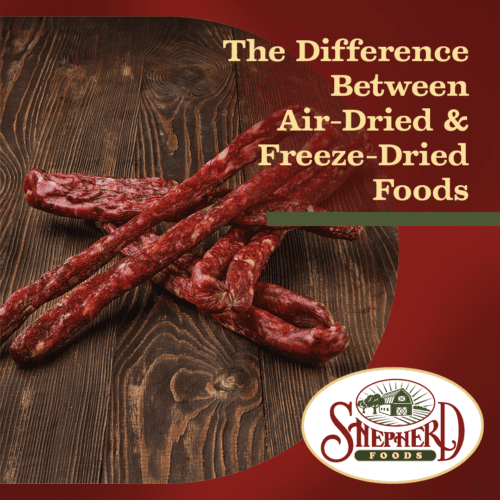 Perishable food items have undergone a drying process for centuries in human history. Before the invention of modern technology, humans dehydrated their commodities to lengthen their shelf life. This was done using salt and other natural resources like the sun and wind. These techniques, nevertheless, were time-consuming and ineffective compared to today’s technology.
Perishable food items have undergone a drying process for centuries in human history. Before the invention of modern technology, humans dehydrated their commodities to lengthen their shelf life. This was done using salt and other natural resources like the sun and wind. These techniques, nevertheless, were time-consuming and ineffective compared to today’s technology.
Today we will discuss the distinctions between two more advanced and contemporary techniques: air drying and freeze-drying food.
- They are two entirely different methods.
- The final goods look and feel noticeably different from the original meal.
- The initial moisture content may be reduced by 70% from air drying to 98% from freeze drying.
- Both techniques extend the shelf life from days to weeks, months, or years.
- The drying technique affects the nutritional content of the final goods differently.
- Each method has a different overall cost.
Difference Between Air Dried Foods and Freeze Dried Food
First, there are a few key distinctions between these two preservation methods. The freeze-drying method employs a more complex overall procedure, which ensures the product’s overall structure and nutrition remain intact. Because of this, a freeze-dried product looks very identical to the original.
1. Procedures and Different Techniques to Store Food
The goal of both processes is to remove as much moisture as possible from the food ingredients. To freeze dry, the food product is frozen to a very low temperature. It is then transferred to a vacuum-sealed container once it is thoroughly frozen. Sublimation reduces the pressure in this compartment so that the product’s ice bypasses the liquid phase and transforms immediately into gas. Once all the moisture escapes by evaporating in this way, the product is now completely dry and prepared to be stored for many years.
2. Nutritional Value of Each Product
Another key factor is nutritional content. No one wants to consume food that has been sitting on the shelf for a year having lost all nutritional value. While both methods preserve some nutritional qualities (because freeze-drying eliminates nearly all of the water molecules), up to 95% of the nutrients can be retained!
During the air drying process, the product is exposed to hot air, vaporizing the water molecules. The heat required by this process also heats the nutrients, causing an amount of them to break down. As a result, only around 75% of the nutrients are retained while air drying.
3. Cost Involved Varies by the Process
For some people, price is perhaps the most significant determining factor. As a process that does not require the machinery that freeze drying requires, air-dried products are typically less expensive.
4. Tastes and Textures are Different
One might think that since both methods preserve more than half of the nutritional value, that their flavors may be more similar to those of the original food product. Due to the higher water content, air-dried items have a more solid texture and superior color saturation than their counterparts. The final result can produce a more concentrated or pungent flavor. Products that have been air-dried can also seem somewhat sticky.
Products that have been freeze-dried, however, can have a crunchier feel. They have lower color contrast and are more prone to breaking. The flavor of the food remains unchanged during the process, of course, once liquid has been used to rehydrate the meal.
5. Rehydration Time and Managed Dimension
These foods require an amount of time that dried goods need to rehydrate after losing their water content during the drying process. Simply soaking the product for the proper period will rehydrate it to a more familiar state.
The majority of freeze-dried goods may be rehydrated in around 10 minutes. This is because freeze-dried meals are often in thin slices or pieces, and freeze-drying only affects the water molecules, leaving the rest of the cellular structure unchanged.
In Conclusion
If you have been considering either of these options as a solution for providing your customers with products to satisfy their long term food storage needs, choose Shepherd Foods as your wholesale solution! We provide the highest quality freeze dried food ingredients for your consumer base to enjoy. With a superior performance and quality than air dried foods, you can rest assured your brand will remain standing with quality.
For more information regarding our co-packing and co-manufacturing services, give us a call today at .


